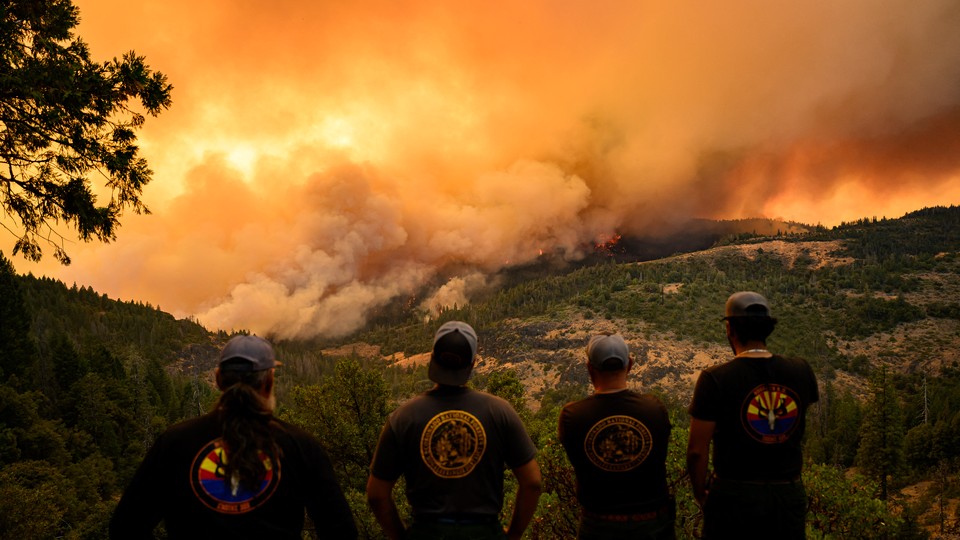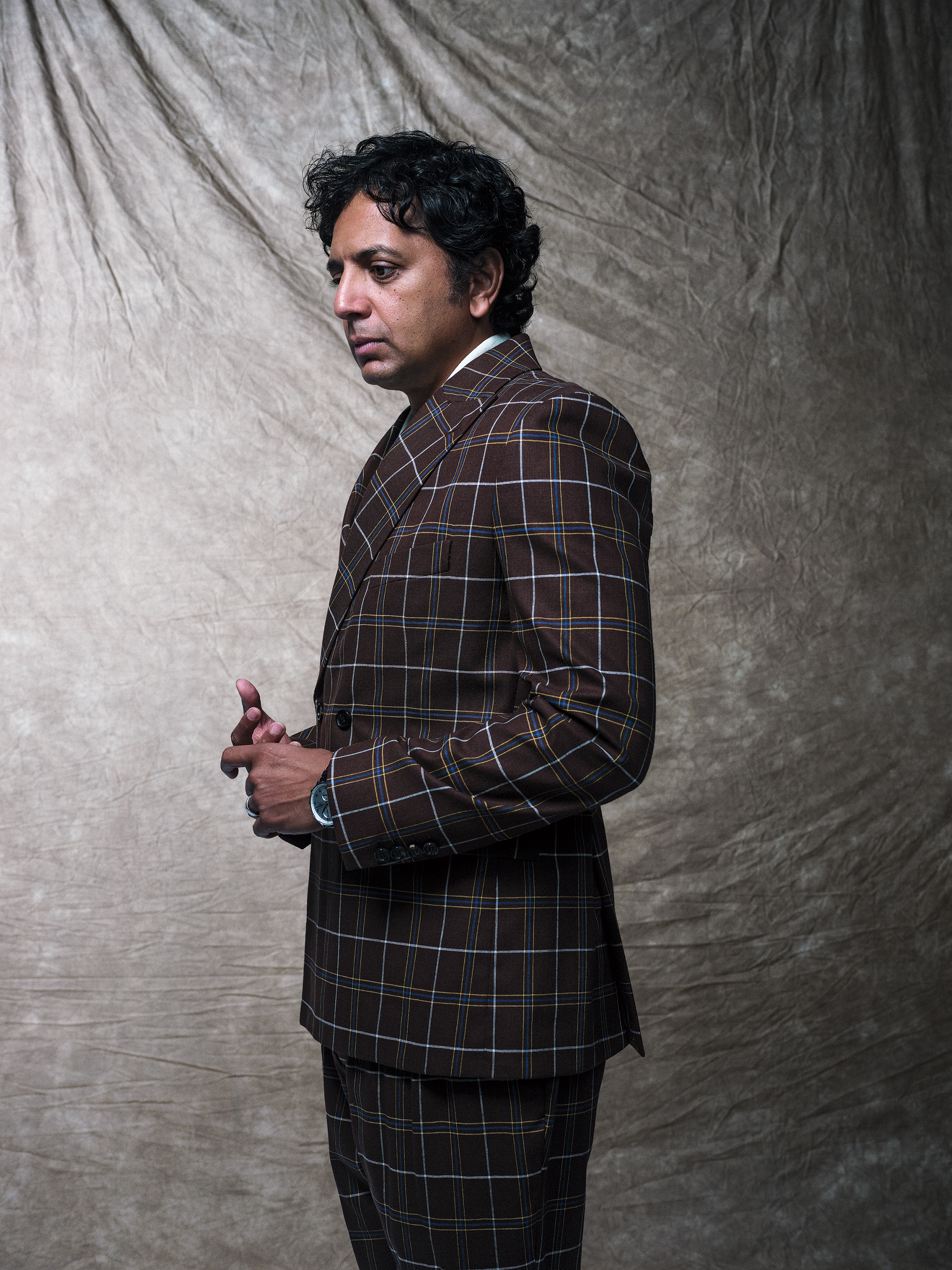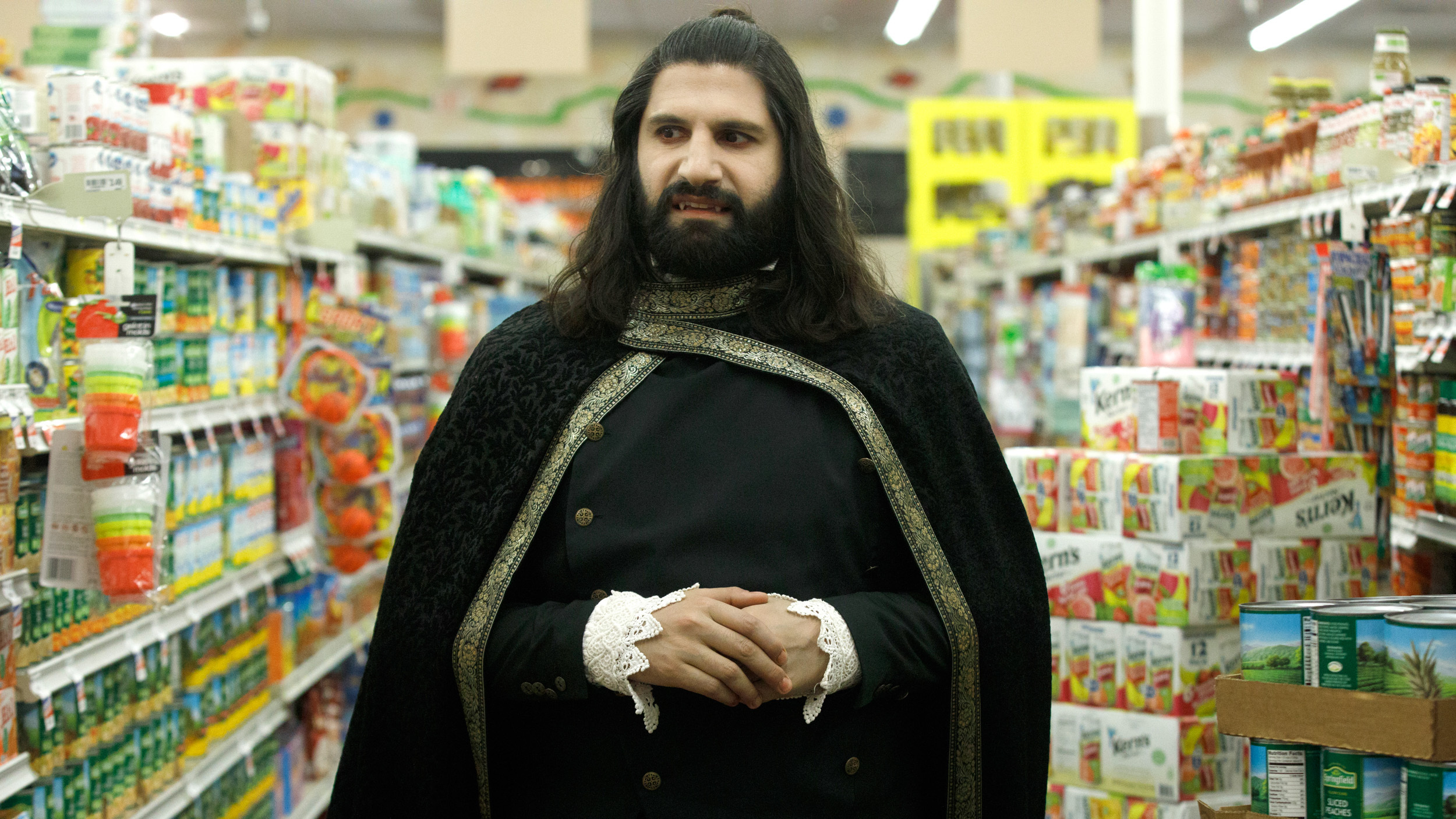Don’t Underestimate Smoke
6 min read
This is an edition of The Atlantic Daily, a newsletter that guides you through the biggest stories of the day, helps you discover new ideas, and recommends the best in culture. Sign up for it here.
Wildfires have been ripping across the American West. Last week, the first major fire that California has seen since 2021 quickly became one of the 10 largest in the state’s history. I spoke with my colleague Zoë Schlanger, who covers climate change for The Atlantic, about why, even as the threats of wildfires grow, the American public does not yet fully grasp what smoke may mean for their health.
First, here are three new stories from The Atlantic:
- The painful reality of loving a conspiracy theorist
- Venezuela passed the torch, even if Maduro didn’t.
- The other memo that started the conservative legal movement
The Right Degree of Alarm
Lora Kelley: How has the threat that wildfires pose changed in recent decades?
Zoë Schlanger: Extreme wildfires are more common now than they were just a short time ago. Researchers like to talk about this in terms of land area burned. Wildfires today are burning nearly twice as much tree cover globally as they did in 2001. In the United States, the 10 years with the largest acreage burned have occurred since 2004.
The peak of wildfire season in the U.S. is also changing as we get hotter temperatures earlier in the season. It used to be that the peak was generally in August; now it’s generally in July.
Lora: You have written that, even as fires become worse, the message that smoke is a legitimate health emergency “seems not to be getting through” to many members of the public. Is this in part because many people can largely go about their day-to-day lives on smoky days—unlike, say, in the middle of a hurricane or blizzard?
Zoë: Over the past few years, I’ve watched people walk around several cities during a wildfire-smoke event without any sort of personal protection, even though masks would provide health benefits. Hurricanes are massive, violent disturbances, whereas smoke is subtler. But the main reason that people aren’t heeding the risks of smoke is that we are largely left on our own to deal with it. Government officials issue some warnings, but those are generally: Stay home; wear a mask; run an air filter. Those messages aren’t always getting disseminated very far.
If you are not someone who can afford an air filter or can afford to stay home, you’re not necessarily going to have the luxury of heeding any of those warnings. And at least in the U.S., there’s very little regulation around labor protections for people who work outside.
Lora: How much do scientists know at this point about the health risks from wildfire smoke?
Zoë: We know a lot about PM 2.5, the particulate matter that is a main component of wildfire smoke. We know that it is small enough to slip into the bloodstream, and that rates of Parkinson’s and dementia may go up. In children, cognitive and behavioral problems have been found to be linked to PM 2.5 exposure. And, of course, people may experience breathing and heart problems.
A lot of good scientific work has happened in this area, but with wildfire smoke, other components can complicate the picture. Let’s say a whole town burns. That might include trees, structures, some industrial facilities. It’s a really complex picture to sort out—there are likely chemicals present that are not in other studied sources of PM 2.5, such as, say, tailpipes and power plants.
Public-health officials also have to contend with the human tendency to not really see harm that’s spread out over a longer period of time. Many of the health problems from wildfire smoke won’t happen right away and so are less likely to be clearly linked to the smoke in one’s mind, unless you know to look out for it.
Lora: I remember last summer, when smoke from wildfires in Canada drifted into New York City, some experts compared breathing X amount of smoke to smoking X amount of cigarettes. What role can metaphors and points of reference like these play in improving public awareness of climate threats?
Zoë: Metaphors are great for public-health reasons. There’s been so much awareness about the harms associated with smoking cigarettes, so that is probably a uniquely useful comparison. It just invokes the right level of Oh, gross in one’s mind. People may hear that and want to protect themselves. But no one should assume it’s an exact metric.
Lora: What would it take to get people to protect themselves from the effects of smoke, or even just to be more aware of it?
Zoë: The right degree of alarm and concern has to be coming from governments. Think about how COVID-19 was explained to us as a public threat: as something that could be transmitted through airborne particles. The messaging was clear; as a result, many people understood the utility, at least for a while, of wearing a mask. In the case of wildfires, awareness will come when governments begin to treat wildfire smoke like the health emergency it is. That might look like more protections for outdoor workers, public mask distributions, or requirements for air filtration at schools, to name a few commonsense measures.
Related:
- You have every reason to avoid breathing wildfire smoke.
- There’s only one way to fix air pollution now.
Today’s News
- The director of Project 2025, a right-wing operation led by the Heritage Foundation, is stepping down. It is unclear whether the project will shut down.
- Israel carried out a strike in Beirut, Lebanon, that targeted a Hezbollah commander, according to the Israel Defense Forces. Israel blamed the commander for an attack in the Golan Heights that killed 12 children; Hezbollah has denied involvement in the attack.
- At a Senate hearing about the assassination attempt on Donald Trump, the acting director of the Secret Service and the deputy FBI director both testified about breakdowns in communication before the shooting.
Dispatches
- The Good Word: Mother has become a term that symbolizes pop-cultural reverence, Caleb Madison writes. But celebrities can’t give us real nourishment or care.
Explore all of our newsletters here.
Evening Read

How M. Night Shyamalan Came Back From the Dead
By David Sims
[M. Night] Shyamalan was in the midst of a head-spinning run of success. Five years earlier, he had directed The Sixth Sense, a thriller about a boy who sees ghosts and befriends a child psychologist—who turns out to be a ghost himself. The movie had been a sensation, financially and critically, and was nominated for six Academy Awards. It had also established an expectation, perhaps an impossible one to satisfy, that each new Shyamalan movie would build to a shocking revelation.
Read the full article.
More From The Atlantic
- Good on Paper: Can blue states build?
- J. D. Vance needs to watch The Brady Bunch.
- Google wins the gold medal for worst Olympic ad.
Culture Break

Spectate. Check out this photo, selected by our photo editor as the Olympics photo of the day, which shows members of Team USA cheering on Simone Biles during her floor routine at the moment they realized that their team would win gold.
Watch. These 20 TV shows, compiled by our critic in 2022, are perfect for people who have a short attention span.
Play our daily crossword.
Stephanie Bai contributed to this newsletter.
When you buy a book using a link in this newsletter, we receive a commission. Thank you for supporting The Atlantic.



